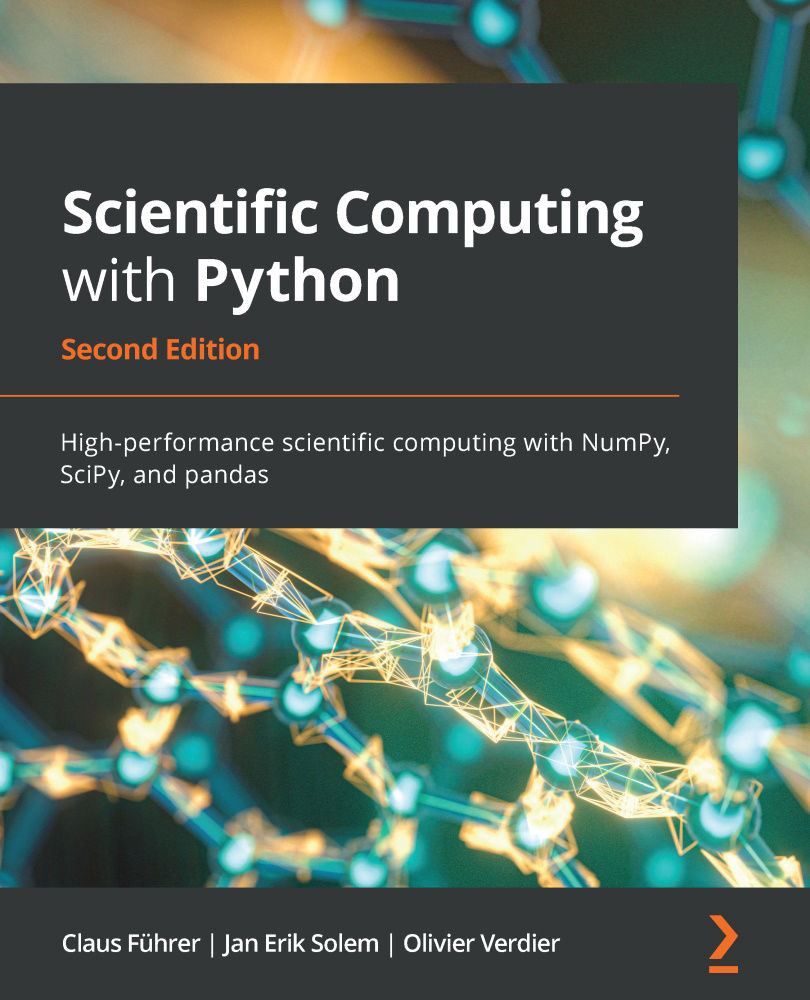In this chapter, we'll focus on two aspects of testing for scientific programming. The first aspect is the often difficult topic of what to test in scientific computing. The second aspect covers the question of how to test. We will distinguish between manual and automated testing. Manual testing is what is done by every programmer to quickly check that a program is doing what it should or should not. Automated testing is the refined, automated variant of that idea. We will introduce some tools available for automatic testing in general, with a view of the particular case of scientific computing.
-
Book Overview & Buying

-
Table Of Contents

Scientific Computing with Python - Second Edition
By :

Scientific Computing with Python
By:
Overview of this book
Python has tremendous potential within the scientific computing domain. This updated edition of Scientific Computing with Python features new chapters on graphical user interfaces, efficient data processing, and parallel computing to help you perform mathematical and scientific computing efficiently using Python.
This book will help you to explore new Python syntax features and create different models using scientific computing principles. The book presents Python alongside mathematical applications and demonstrates how to apply Python concepts in computing with the help of examples involving Python 3.8. You'll use pandas for basic data analysis to understand the modern needs of scientific computing, and cover data module improvements and built-in features. You'll also explore numerical computation modules such as NumPy and SciPy, which enable fast access to highly efficient numerical algorithms. By learning to use the plotting module Matplotlib, you will be able to represent your computational results in talks and publications. A special chapter is devoted to SymPy, a tool for bridging symbolic and numerical computations.
By the end of this Python book, you'll have gained a solid understanding of task automation and how to implement and test mathematical algorithms within the realm of scientific computing.
Table of Contents (23 chapters)
Preface
Getting Started
 Free Chapter
Free Chapter
Variables and Basic Types
Container Types
Linear Algebra - Arrays
Advanced Array Concepts
Plotting
Functions
Classes
Iterating
Series and Dataframes - Working with Pandas
Communication by a Graphical User Interface
Error and Exception Handling
Namespaces, Scopes, and Modules
Input and Output
Testing
Symbolic Computations - SymPy
Interacting with the Operating System
Python for Parallel Computing
Comprehensive Examples
About Packt
Other Books You May Enjoy
References
